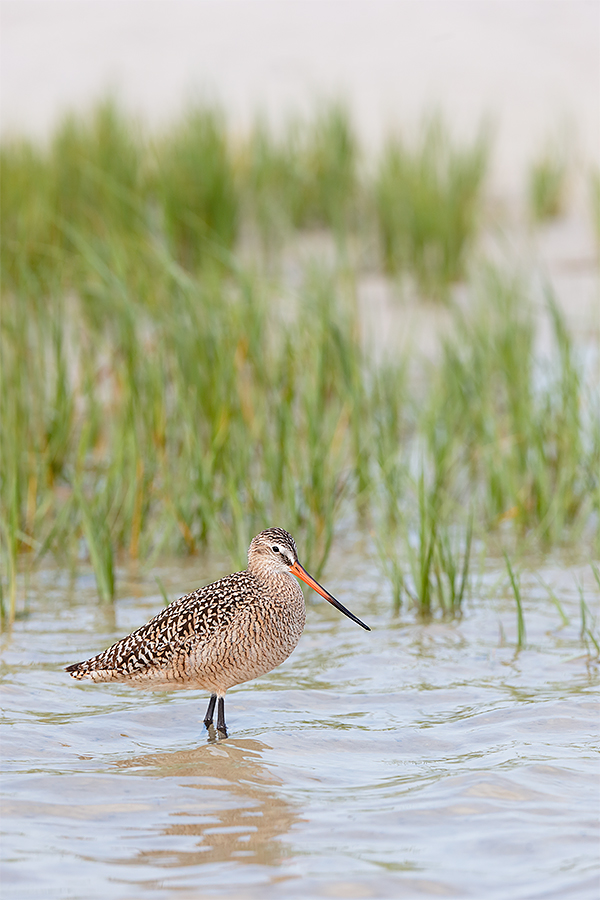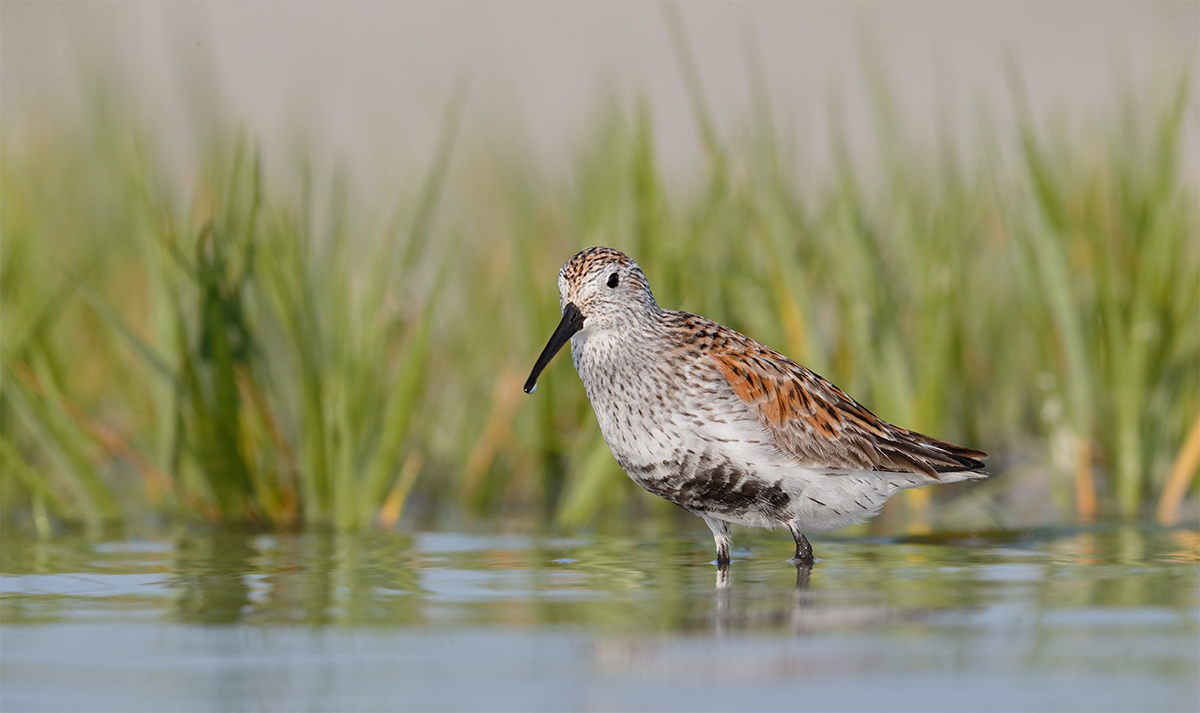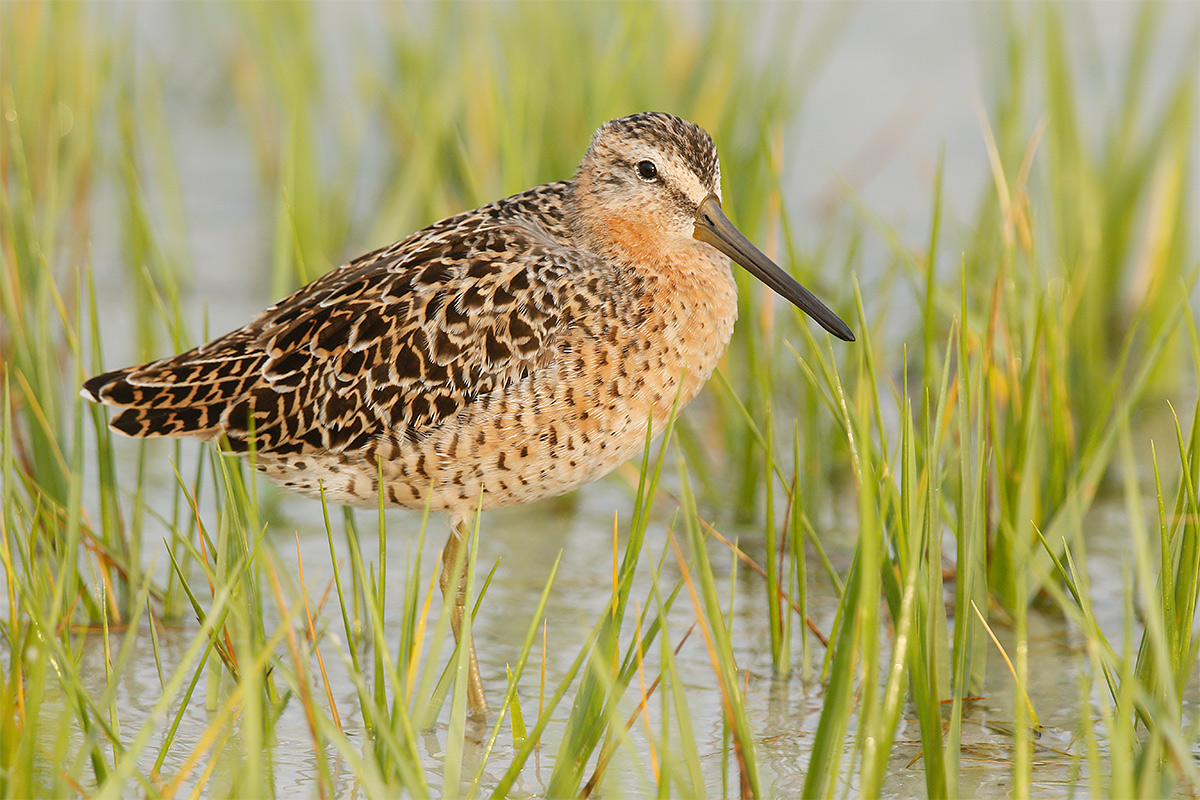Stuff
Though conditions on Monday morning turned out to be much better than on Sunday morning, I decided to pack up, get everything in the car, and drive back to ILE. I was beat. The DeSoto IPT group was great and and so were the birds. As fate would have it, it is supposed to rain for 2 days…. I guess that the weather gods heard that I was out of Dodge. I enjoyed a nice swim yesterday and will be back to the full routine today.
This blog post, the 110th in a row, took about 2 1/2 hours to prepare. It was published just after 5am on Tuesday morning.
Answers to the Spoonbill Aperture Quiz tomorrow.
Featured Listing
Canon EF 24-70 f2.8L II USM Lens
Dave Bourgaize is offering a used Canon EF 24-70 f2.8L II USM lens in excellent condition for $1499.00. The sale includes front lens cover and rear lens cap, EW-88C lens hood, original Canon bag, and insured shipping via UPS Ground to US addresses. Your item will not ship until your check clears unless other arrangements are made. Please contact Dave by e-mail or by phone at (310) 748-9547 (pacific time zone).
I own and use the 24-70II. It is much sharper edge to edge than the lighter, more versatile Canon EF 24-105mm f/4L IS USM lens. I consider the 24-70II a must for serious landscape photographers. As it sells new for $1899 Dave’s price is lower than any I have seen for this lens in excellent condition. It should sell immediately.
|
This image was created on the first day of the Fort DeSoto IPT with the hand held Canon EF 300mm f/2.8L IS II USM lens, the Canon Extender EF 1.4X III, and the Canon EOS-1D X. ISO 800. Evaluative metering +1 stop as framed: 1/1250 sec. at f/5.6 in Manual mode. AWB. Four AF points below the center AF point/AI Servo-Surround/Shutter Button AF as framed was active at the moment of exposure and caught the center of the front of the bird’s breast. Click on the image to see a larger version. Image #1: Marbled Godwit with marsh grasses |
300 II/1D X in Low Light Conditions
In the “What Camera Body for the Conditions?” blog post here, I asked:
Why the 300 /f2.8L IS II (over the 200-400 or the 600 II)?
Why the (full frame) 1D X?
While many folks skirted around the right answers and few did pretty well, everyone missed the #1 answer…. Bill Eaton covered two important points succinctly when he wrote, “Both body and lens are good in low light.” Elinor Osborne did a nice job overall as well. As did David Peake as well. In fact, his 4:37am comment was quite excellent.
Here are my thoughts:
#1: Most of the birds at DeSoto are very tame (David Peake: You might have decided that you didn’t need the extra reach of the crop sensor since you had 300 , 420, and 600 covered with your lens/TC choice.)
#2: At f/2.8 the 300 II is a full stop faster than the two larger lenses. This allowed me to use lower ISOs while maintaining a fast-enough shutter speed.
#3: The 300 II is lighter and well smaller than either of the two larger lenses. This makes it easier to hand hold (Matteo Bianchi), allows you greater freedom of movement, and gives you a better chance of capturing images of flight and action.
#4: High ISO noise control is better with the 1D X than with the 7D II.
#5: It’s nice to go light with just one lens on occasion. When conditions were better I brought my beach cart with the big wheels and took the 600 II, the 200-400, the 300 II, a wide angle lens, and both TCs. And one afternoon I brought along the 70-200 f/2.8L IS lens as well.
7D II Viewfinder Level
I find the viewfinder level in the 7D II quite helpful when handholding and creating verticals, especially when using the camera without the vertical battery grip.
Free Excerpt from the 7D Mark II User’s Guide
Viewfinder Display
Here I set Viewfinder level to Show and VF grid display to Enable. In Show/hide in viewfinder I leave all the boxes checked except for the last one for Flicker detection as that deals with indoor photography.
I find the Viewfinder level incredibly useful when hand holding wide angle or fish eye lenses. I wish that all of my cameras offered this feature.
Learn more about the 7D Mark II User’s Guide or purchase your copy here.
|
This image was created on the second morning of the Fort DeSoto IPT with the tripod-mounted Canon EF 600mm f/4L IS II USM lens, the Canon Extender EF 2X III, and the Canon EOS-1D X. ISO 400. Evaluative metering plus about 1/3 stop: 1/640 sec. at f/9. AWB. Center AF point (by necessity)/AI Servo/Shutter Button/Expand AF as originally framed was active at the moment of exposure. The active AF point was on the center of the bird’s upper breast. Image #2: Dunlin molting into breeding plumage. |
Loving the Haze
On our second IPT morning we enjoyed a light haze from just after sunrise until we left the beach at about 10:30am. The haze softened up the light very nicely. In addition, without hard-edged shadows we were able to work well off light angle. I tracked this bird as it moved from our right to well to our left, about 30 degrees past sun angle. When it stopped for an instant in front of a small patch of marsh grass, I fired off two quick images. As I was working quickly the image was about 2.5 degrees off level so I needed to go with a pano crop. In addition to the low crop I re-shaped the bird’s eye with a Quick Mask: Transform > Warp.
i made this image while seated in the warm lagoon water. At times, the water was up to my chest. I will be sharing many more hazy sun morning 600 II/2X II/1D X images here with you soon.
|
This image was created on the third afternoon of the Fort DeSoto IPT with the hand held Canon EF 300mm f/2.8L IS II USM lens, the Canon Extender EF 2X III, and the Canon EOS 7D Mark II. ISO 400. Evaluative metering plus about 1/3 stop as framed: 1/640 sec. at f/5.6 in Manual mode. AWB. Center AF point/AI Servo-Expand/Shutter Button AF as framed was active at the moment of exposure and caught the side of the bird’s breast just behind and several inches below the bird’s eye. Click on the image to see a larger version. Image #3: Short-billed Dowitcher in the middle of a stand of marsh grass. |
Loving the Marsh Grasses
Participant Phil Frigon (say FREE-gone) mentioned early on that he really liked images that included at least some marsh grass. He inspired me to create more images in that vein so I did just that. Each of today’s images features the lovely green stuff. Does anyone know if it is spartina?
When I saw the bird standing right in the middle of patch of marsh grass I figured that there would be at least a few blades of grass blocking its face and eye. I approached slowly while standing and when I raised my lens I was amazed to see that the bird was well in the clear and perfectly framed by the vegetation.
Image Question
Why in this particular instance was it better to be standing than seated?
Your Fave?
Please take a moment to leave a comment and let us know which of the three images you like best and why you liked it best. Remember, leaving a comment makes the blog interactive and more interesting. And in addition, it heightens your learning experience.
|
You can purchase your copy of the The 7D Mark II User’s Guide in the BAA Online Store here for $59. |
7D Mark II User’s Guide
You can purchase your copy right now in the BAA Online Store here for $59. Or call Jim or Jennifer at 863-692-0906 and place a phone order. This is the highest priced user’s guide ever, surpassing the 5D II User’s Guide that is priced at $50. Why? I did twice as much work preparing the 7D II Guide. It required many days of writing, many dozens of hours of study and research, not to mention hundreds of hours in the field trying to figure out the best 7D II setting while doing what I love to do best, photographing birds and nature. The camera is quite complex. Many thanks to both Rudy Winston and Chuck Westfall of Canon USA for their help in getting me through the stickiest parts.
The guide contains 23,196 words in 516 paragraphs. There are 24 photos and screen captures interspersed in the main body of the text and a gallery of 23 additional 7D II images that show what the camera is capable of with a variety of lens and lens/TC combinations. We would love your feedback.
The Great Strength of the 7D Mark II User’s Guide
The very great strength of the 7D Mark II User’s Guide is the coverage of the autofocus system. I review in detail all of the items on the five pink AF Menus. Most important of these is the Custom Case setting (at AF 1) that I have developed over time and currently use for all of my bird photography. On the recently concluded Hooptie Deux Spoonbills and more IPT John Johnson of Naples, FL mentioned that he was having trouble producing sharp flight images. I set up my Custom Case on his camera, and within minutes he was amazed at the sharp results that he was getting…. While skill, strength, fine motor control, and superior hand eye coordination are all factors that will influence your success as a flight photographer, you can have all of the preceding in spades but if your camera is not set up properly much of your effort will be in vain….
What Else is in the Guide?
In the 7D Mark II User’s Guide you will learn everything that I know about the important topics listed below, and better yet, I explain the options for each along with my reasons for choosing a specific setting in a specific situation.
Handling the WHITEs
The top LCD and all camera control buttons
7D Mark II drive modes
How to manually select an AF sensor
Choosing an AF Area Selection Mode; how and why (includes extensive detail)
Moving the AF point or Zone
The creation of in-camera Multiple Exposures and in-camera HDR images (includes extensive detail)
Live View Shooting and AF choices (all new in the 7D II)
Menu Item Access
Coverage of almost all Menu Items and Custom Functions including the following: Image Quality, Auto Lighting Optimizer, Lens aberration corrections settings, Highlight Tone Priority, AF Configuration Tool (as above, this includes details on the custom setting that I use), Acceleration/deceleration tracking, Tracking sensitivity, Lens drive when AF impossible, Orientation linked AF point (I love this feature), Highlight alert, Histogram display–do you know how to access both histograms at once?, Auto rotate, Image Jump, LCD Brightness, Info button display options, Custom Shooting Modes set-up, ISO Safety shift, using the Q button, setting up rear focus, and setting up your My Menu feature (among others).
The guide is–of course–written in my informal, easy-to-follow style.
Please note: Some Menu items are not covered in this guide for one of several reasons:
They deal only with the creation of movies (not covered)
They are irrelevant to nature photography.
After spending hours studying the 7D II Instruction Manual and consulting others I have no clue as to the purpose or the reason for the existence of a given feature.
Though I recommend that the irrelevant and confusing items be left at the default settings, I do, in most cases, I refer you to the relevant page in the 7D II Instruction Manual. If you follow up, it just might turn out that you are a lot smarter than me. In those cases I would love to hear from you via e-mail. So far none of the above have prevented me from creating many spectacular images with my 7D II.
Please note that this guide does not contain a table of contents or an index. To search the document for a given topic simply hit Control F to search. When the Find box pops up, simply type the term that you are looking for into the field and hit Next. This will allow you to find what you are looking for quickly and efficiently.
If you purchase the 7D II UG and it helps you to create better images, please feel free to send no more than two 1200 pixel wide or 900 pixel tall sharpened JPEGs to me via e-mail along with your comments. I will be glad to do a short critique if so requested.
Otherwise, feedback via e-mail or blog comment is always appreciated.
Click here and scroll down for a free 7D Mark II User’s Guide AF Point Auto Switching Excerpt.
Be sure to like and follow BAA on Facebook by clicking on the logo link upper right. Tanks a stack!
Support the BAA Blog. Support the BAA Bulletins: Shop B&H here!
We want and need to keep providing you with the latest free information, photography and Photoshop lessons, and all manner of related information. Show your appreciation by making your purchases immediately after clicking on any of our B&H or Amazon Affiliate links in this blog post. Remember, B&H ain’t just photography!
Amazon.com
Those who prefer to support BAA by shopping with Amazon may use this link:
Amazon Canada
Many kind folks from north of the border, eh, have e-mailed stating that they would love to help us out by using one of our affiliate links but that living in Canada and doing so presents numerous problems. Now, they can help us out by using our Amazon Canada affiliate link by starting their searches by clicking here. Many thanks to those who have written.
Typos
In all blog posts and Bulletins, feel free to e-mail or to leave a comment regarding any typos or errors. Just be right :).


















#3 definitely my favourite. The feather detail, head position, catch-light in the eye, and colours, all give it the edge for me.
I’d say standing allowed you to get a cleaner image without grass blades obscuring the bird (and also preventing the grass crossing over your AF points and throwing out the focus).
I agree standing allowed you to shoot over the foreground grass so it would not “block” the bird.
I prefer #3 due to the colors and the great markings on the bird. I also like the head angle of the bird on #3 than the bird in #2. I think that actually makes a big difference to me, even if more subconsciously.
Warren
I am glad to see the photos with Marsh grass. I think it gives context to the photos!
Art, I am getting a 7d mk2. I have a 70-200 2.8 and a 300 2.8. From what I have read, you are happy with this rig. In the immediate future, do I need other lenses?
Hi Graham, Sounds like a neat kit. And yes, I like it. Note that when using either lens with the 2X III TC to photograph birds I would strongly recommend using a sturdy tripod and the Mongoose M3.6.
Lenses are tools. As I do not know what jobs you want to do with your tools, I cannot know if you need other lenses….
artie
Hi Art. Living in Orlando, my goal is to photograph birds. I have a Really Right Stuff TVC 34L, tripod and one of their awesome BH55 heads. Can the Mongoose gimbal be used on the right of the camera. Most all gimbals I have seen are used on the left of the camera. I trust this gimbal can be used with the 800mm Canon lens? With the lenses I have, can I hold off on the 100-400 vII for a while. Thank you.
Hi Graham,
I do not like any of the Really Wrong Stuff tripods or heads; the tripods are heavy and cumbersome, and the ballheads have so many knobs that I find them impossible to use. Plus, the stuff costs a ton. You can use a Mongoose M3.6 to either the left or the right of the camera body. My recommendation depends on the lens.
I used the 800 on my Mongoose for all the four years that I owned it and once made a sharp image with it at 1/6 second.
If you go for a 100-400II at some point I would of course appreciate your using our link. artie
Standing for the shot allows the wonderful contrast of the feathers to be more evident. I like image 3.
The remainder of my comment didn’t post.
#2 is my choice . I prefer the foreground less obscured as it helps the bird stand out a bit more from the softly framing background.
Regards
D
Hi Artie,
Standing changes your perspective. Your higher shooting position means the bird is less obscured by the foreground grasses
Standing too look down at the bird over the top of the foreground grass. I prefer #1.
Why in this particular instance was it better to be standing than seated?
Agree with the previous posters; the grass would have covered a lot of the bird.
I have to go with #2; I prefer the clear view of the bird against the grassy background.
I have to go with #3.Really like the contrast between the grass and the Dowitcher and the fact that the grass creates a near perfect frame around the subject.
Beautiful. I really like the addition of the marsh grasses. If you had been seated here, grass would have covered most of the bird.
Why in this particular instance was it better to be standing than seated?
To reduce the intersection of the grass.
My fave is #2. I love the low angle look, being eye to eye.
Doug
Intersection of what? a
The grass and the Dowitcher.
Doug